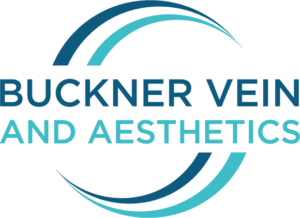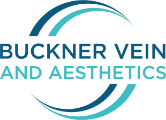There are two forms of Sclerotherapy: Foam Sclerotherapy for treatment of varicose veins and Traditional Sclerotherapy for treatment of spider veins.
Both of these procedures are offered at our Eldersburg and Columbia, MD locations.
Foam Sclerotherapy - for varicose veins
Foam sclerotherapy is a medical procedure used to treat varicose veins. Varicose veins result from weakened valves which keep the veins from functioning properly and allow blood to pool in the legs. Varicose veins may be not only unattractive but medically problematic. During foam sclerotherapy, a sclerosant solution is injected into the affected veins, causing their eventual collapse. These damaged veins will be absorbed by the body and blood flow will naturally be rerouted through other, healthy veins.
The Foam sclerotherapy procedure
To ensure precision, foam sclerotherapy is performed with the aid of ultrasound imaging. The affected veins are injected with a foamed sclerosant solution, which causes the veins to eventually collapse and be absorbed into the bloodstream. This safe procedure can be performed outpatient, in the doctor's office and takes less than an hour to complete. Anesthesia is not needed for this procedure. After the skin is cleaned with an antiseptic solution, the sclerosant is injected into the affected veins with a very fine needle. The number of injections per session varies based on the number and length of the damaged veins. After the procedure, cotton balls and compression tape are applied to the injection site. Patients usually report only a mild burning sensation during the treatment.
Recovery from Foam Sclerotherapy
After foam sclerotherapy, most patients can immediately return to work and regular activities the same day. Exercise and other strenuous activities, however, should be avoided for 2 days. Compression stockings may need to be worn for 1-2 days after the procedure, and some patients may experience mild bruising and discoloration following sclerotherapy; but these side effects usually subside within a few days. The results of this procedure are usually fully visible after 3 to 6 weeks. To preserve the results, patients should maintain an active, healthy lifestyle after the procedure.
Risks of Foam Sclerotherapy
While sclerotherapy is a safe procedure, there are certain risks associated with any procedure of this type. Rare complications may include: nerve damage, phlebitis, deep vein thrombosis, infection or failure of the procedure. Most patients are very satisfied with the results of this treatment.
Traditional Sclerotherapy - For Spider Veins
Sclerotherapy is a minimally invasive medical procedure used to treat spider veins, most commonly found on the legs, by collapsing them through the use of a solvent. This method has been used on patients since the 1930s with great success, producing increasingly effective medical, as well as cosmetic, results.
THE TRADITIONAL SCLEROTHERAPY PROCEDURE
During sclerotherapy, a sclerosant is injected into the damaged veins. This will cause irritation in the affected veins and produce their eventual collapse. When the weakened veins collapse, they will be reabsorbed into the body and other healthier veins will take their place in the circulatory system.
Sclerotherapy has proven to be a safe procedure and is performed outpatient in the doctor's office. Typically, it is performed in less than an hour, although a varying number of injections may be required, depending on the number of veins involved. Patients do not require an anesthetic and usually report little or no discomfort during the procedure, only a mild burning sensation. In some instances, several treatments may be necessary.
Risks of TRADITIONAL Sclerotherapy
While sclerotherapy is a safe procedure, there are certain risks associated with any procedure of this type. Rare complications may include: nerve damage, phlebitis, deep vein thrombosis, infection or failure of the procedure. Most patients are very satisfied with the results of this treatment.

